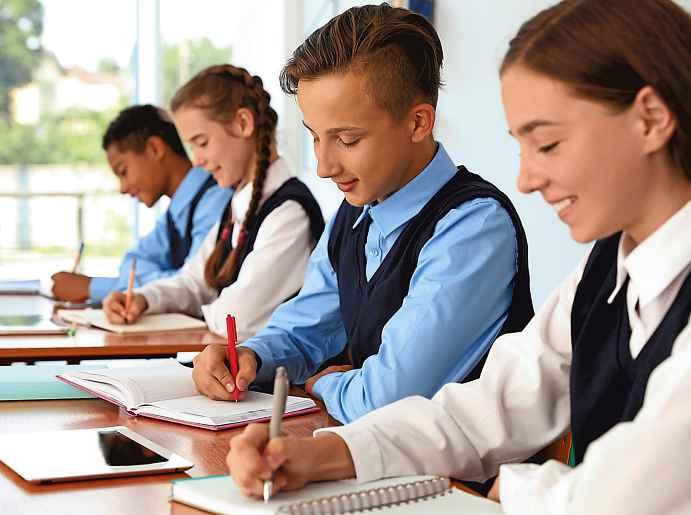
3 minute read
Qualifications
Working towards the end goal – qualificat ions
In a bid to ensure pupils leave school better prepared for work or further study, GCSE and A-level qualifications have been overhauled in recent years.
Although there is still some time before your child will be ready to consider their options, it helps to understand what they will face in the future.
For the first time, in 2017 students didn’t just receive their grades subjects in the usual A*-G format – in mathematics, English language and English literature they were graded on a scale between 9 and 1 instead.
These were followed by a further 20 subjects including history, geography, double science, PE and art and design with the remaining subjects getting the new grades this August.
A nine is the top grade, while one is the lowest pass possible, with an outright fail still graded as a U.
The top grades of A**, A* and A are broadly equivalent to a new grades of 9, 8 and 7, while pass marks of B and C have been replaced by grades 4, 5 and 6. At the lower end of the scale, grades D, E, F and G will be graded 3, 2 and 1.
The Department for Education (DfE) says its new GCSEs are designed to match the standards set by the strongest performing education systems in the world.
While exam regulator Ofqual says the 1 to 9 scale will help them to better differentiate between the highest performing pupils and distinguish clearly between the new and old exams. It also says there is new, more demanding content.
Courses are designed for two years of study – they are no longer divided into different modules and students will take all their exams at the end of their course.
Exams can only be split into ‘foundation tier’ and ‘higher tier’ if one exam paper does not give all students the opportunity to show their knowledge and abilities. Mathematics is one of the few subjects that remains tiered.
The regulator says this is because manageable assessments cannot be designed that would both allow students at the lower end of the ability range to demonstrate their knowledge, skills and understanding, and that would stretch the most able students. The two tiers are focused on grades 1-5 and 4-9.
There are now fewer course options in the new science GCSEs – most students will take the new combined science course, which is worth two GCSEs, or three separate GCSEs in biology, chemistry and physics.
Meanwhile changes have also been introduced to the A-level system. The reforms have seen a switch to assessment being mainly by exam and have also led to some subjects such as applied science and creative writing being scrapped.
New style study programmes were introduced for some subjects in 2015 and since 2017 all courses have followed the same system. Courses are no longer being divided into modules and all exams take place in the summer. The changes also mean that students have less coursework and fewer practical assessments.
AS and A-levels have been decoupled so that AS levels become stand-alone qualifications and no longer count towards an A-level, in the way they have previously done. They have also been designed by exam boards to be taught alongside the first year of A-levels.
The content for the new A-levels has been reviewed and updated, with universities playing a much greater role in this for the new qualifications than they did previously. It is hoped that this will make A-levels better preparation for university study.
T Levels, which are equivalent to three A-levels, have been introduced in recent years. The two-year courses were developed in collaboration with employers and businesses so that the content meets the needs of industry and prepares students for work, further training or study.
T Levels offer students a mixture of classroom learning and ‘on-the-job’ experience during an industry placement. Subjects include in design, surveying and planning for construction; digital production, design and development; education and childcare; finance; hair, beauty and aesthetics; animal care and management; media, broadcast and production; and healthcare science.
Apprenticeships are also becoming an increasingly popular alternative to A-levels, with students looking to combine real work with academic study. It is also an opportunity for 16-year-olds to earn and learn at the same time as getting a foot in the door of their chosen industry.










